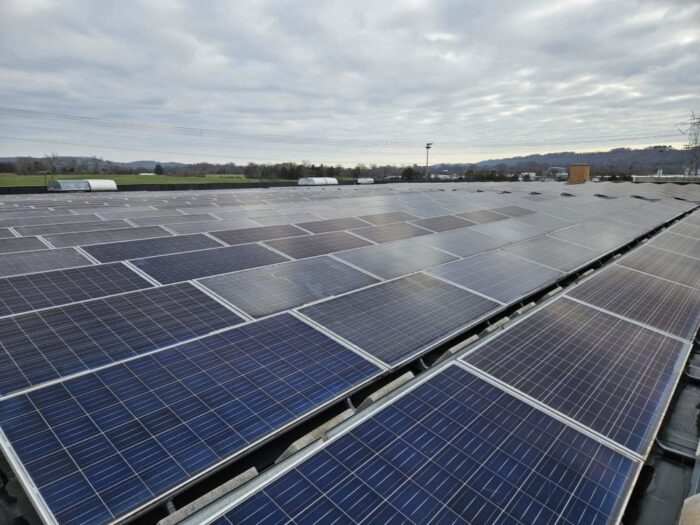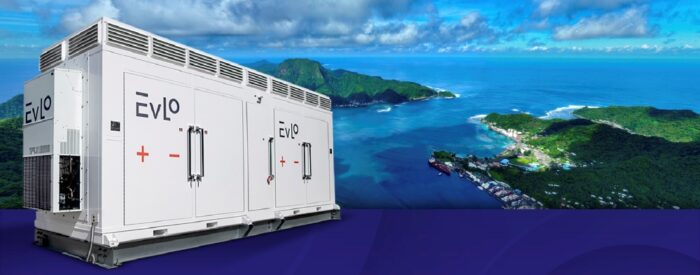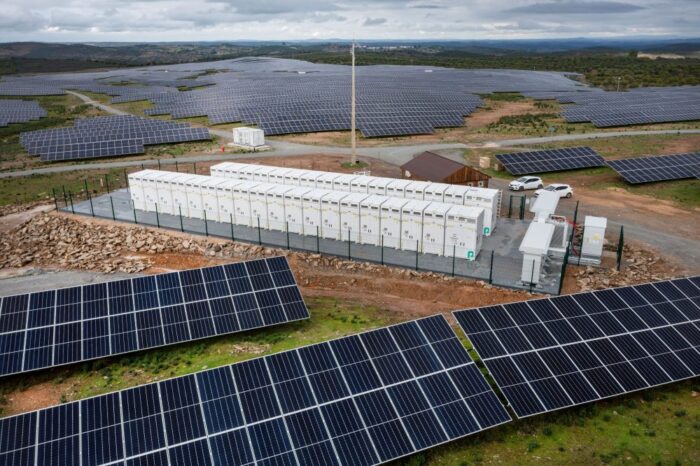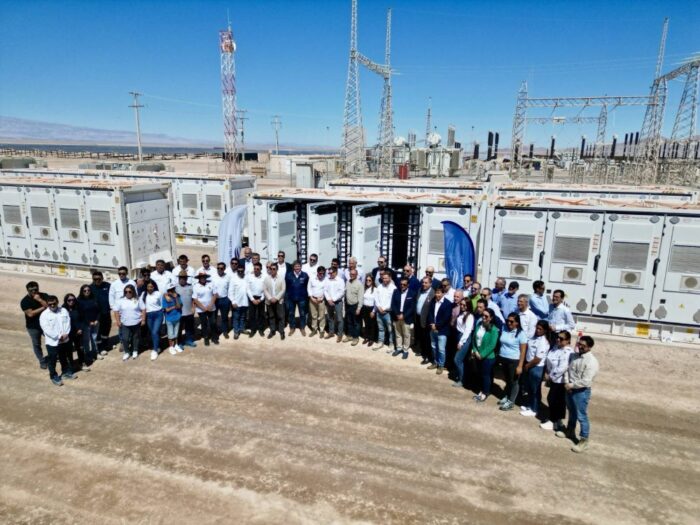Chroma Energy installs solar at McGhee Tyson Air National Guard Base | Projects Weekly

The McGhee Tyson Air National Guard Base in Louisville, Tennessee, is the home of a new 1.4 MW solar project. Meanwhile, several projects are making sunbeams across the globe. Read about the developments in the latest Projects Weekly.
Chroma Energy Group has completed a new 1.4 MW solar installation at McGhee Tyson Air National Guard Base in Louisville, Tennessee. Chroma Energy Group began constructing the installation in April 2023 as a subcontractor to Apex Construction Group of Lenoir City.
Once finished, the microgrid will enhance base operations during power outages and national emergencies, providing increased energy reliability for critical operations like air refueling missions.
“This project is a great opportunity to help ensure the base is prepared for the future. We’re proud to support the Air National Guard in their important mission,” said Ed Rottmann, CEO of Chroma Energy Group.

Cool factor: The solar system, designed to enhance the base’s energy resilience and offset energy costs, is part of a phased initiative to establish a microgrid at McGhee Tyson Air National Guard Base. The base will eventually add battery storage to the installation, further reducing the base’s grid reliance.
Constructing a solar array near an airfield comes with unique considerations. Chroma Energy Group conducted reflection studies and carefully positioned the solar panels’ tilt angle to prevent glare from affecting flight operations at the base and nearby civilian airport.
“This installation is visible to all who fly over the base. To us, it’s a symbol of our commitment to energy resilience that enhances peoples’ lives,” said Rottmann. “Solar power plays a crucial role in our nation’s energy future, and we are proud to contribute to the Air National Guard’s long-term energy reliability goals and be a part of that.”
EVLO commissions first of three energy storage projects in American Samoa
EVLO Energy Storage Inc. (EVLO) has completed commissioning of a 4 MW, 8 MWh, 2-hour duration energy storage system, the first of three projects in American Samoa. In collaboration with Eastern Power Solutions (EPS), the solar + storage projects will support American Samoa Power Authority (ASPA)’s mission to provide quality, safe, economical, and sustainable utility services to the community of American Samoa, the southernmost U.S. territory, comprising about 76 square miles across five islands and two coral atolls.

Cool factor: The three projects, deployed on American Samoa islands of Tutuila and Aunu’u will have installed capacities of 4 MW / 8 MWh, 5 MW / 10 MWh, and 1 MW / 2 MWh. All three projects will support ramp rate control to smooth and limit fluctuations in solar PV power output, ensuring reliable renewable integration and grid stability.
ASPA is a development-oriented public utility providing electricity, water, wastewater, and solid waste services to about 50,000 residents. American Samoa uses imported fossil fuels for almost all of the territory’s energy needs, including transportation, drinking and wastewater treatment, and most of its electric power generation.In 2016, the American Samoa Renewable Energy Committee (ASREC) set a goal to meet 100% of American Samoa’s energy from renewable energy resources by 2040, primarily with solar energy.
Powin delivers utility-scale battery system to Portugal solar park
Galp, Portugal’s leading integrated energy company, and Powin, a U.S. based global energy storage integrator, completed the commissioning and injected the first electrons of stored energy to the grid from a utility-scale battery energy storage system at Galp’s largest solar power plant in the country.
“We are leaping ahead in the learning curve, managing complex energy systems and offering a new range of services and opportunities to customers, while contributing to a stable and sustainable energy system,” said Georgios Papadimitriou, Galp’s executive VP of renewables, new business, and innovation.
Galp is one of the main producers of photovoltaic solar energy in the Iberian Peninsula, with 1.5 GW of installed renewable generation capacity and 400 MW new renewable capacity to be installed by 2026.

Cool factor: Installed near Alcoutim, in the southern region of the Algarve, the 5 MW / 20 MWh battery system, Powin’s first project in Europe, enhances the site’s ability to dispatch renewable energy to the grid when it needs it most and optimizes grid stability, thus becoming an important tool in the expanding market for grid system services. With a combined capacity of 144 MW, the plants in the Alcoutim region produce enough energy to power 80,000 homes.
The battery energy storage project utilizes Powin’s Centipede Stack750 and a power conversion system from Hitachi Energy, underscoring the importance of partnership between global companies in supporting Europe’s energy transition.
ContourGlobal inaugurates solar + storage plant in Chile
ContourGlobal celebrated the commissioning of a 221 MWp solar + 1.2 GWh battery storage plant in the Antofagasta region of Chile.
ContourGlobal’s CEO Antonio Cammisecra and the Chile’s Undersecretary of Energy Luis Felipe Ramos, accompanied by the president of the National Electrical Coordinator, Juan Carlos Olmedo, along with local authorities and representatives from the electricity sector, celebrated this week the commissioning of the Quillagua plant, located in Maria Elena municipality. This milestone marks the final stage before commencing commercial operation in the coming weeks and starting to fulfill its long-term clean power purchase agreement (PPA), ensuring the supply of solar energy at night and dispatching any surplus to the commercial market.

Cool factor: The Quillagua plant is capable of delivering 200 MW for 6.2 hours after sunset, making it the largest solar plant coupled with battery storage system in Latin America. The project is part of a larger development that includes another similar facility in the Tarapacá region. This is the Victor Jara plant, with 231 MWp of photovoltaic solar energy and 1.3 GWh of battery storage, which will be ready in the second half of the year, several months ahead of the initial plan. Both projects, with a total capacity of 452 MWp solar and 2.5 GWh of battery storage, were acquired from Grenergy at the end of last year by ContourGlobal.
Kaiser Permanente debuts largest hospital-based microgrid in U.S.
Kaiser Permanente has unveiled the largest hospital-based, renewable energy microgrid system installed in the United States, supporting California’s clean energy transition while improving environmental health and reducing costs.
The battery storage component of the project was funded through an $8.3 million grant from the California Energy Commission to Faraday Microgrids. The solar power canopies were installed by Ameresco under a power purchase agreement with Kaiser Permanente.
In addition to providing emergency backup generation in the rare case of a power outage, the Ontario microgrid increases the hospital’s energy independence and reduces its energy costs.
Cool factor: The new microgrid system at the Kaiser Permanente Ontario Medical Center in Southern California adds 2 MW of on-site solar generation and 9 MWh of non-lithium battery storage capacity to the state’s electrical grid, increasing reliability and supporting California’s transition to 100% renewable energy by 2045. The microgrid also features a 1 MW fuel cell.
The microgrid provides reliable electrical power for the hospital’s day-to-day use and will serve as the initial emergency power backup system during commercial power outages. It has the capacity to serve all the hospital’s emergency power needs for 10 continuous hours. All California hospitals are required to have backup power in the event of an electrical grid outage affecting their area, traditionally in the form of diesel generators.





Comments are closed here.